Welcome to Moda Fabrics!
To wash or not to wash...
To wash or not to wash...
Ask a group of quilters whether you're "supposed" to pre-wash and you'll get a dozen different answers. And that's just from a dozen quilters.
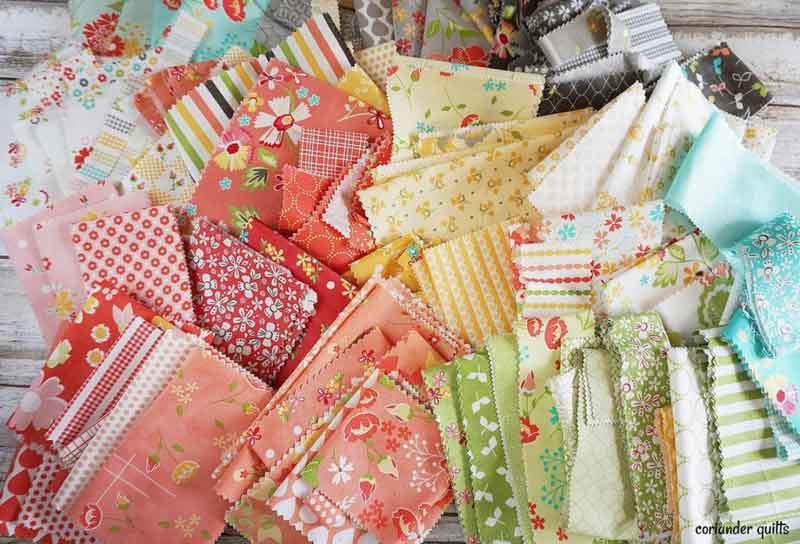
(Picture of scraps from Corey Yoder's collections swiped borrowed from Corey Yoder's Instagram.)
This is always a subject that comes up from new quilters and experienced quilters, and I'll write at the outset that there isn't any one right answer.
When it comes to the fabrics we use for quilting, they will shrink when washed. That's what cotton does. And linen. (Ditto for cotton-linen blends.) If those fabrics are being used for garments, then they absolutely should to be pre-washed. Unless you like garments that are shorter and tighter than intended. But when it comes to fabrics used for making quilts and quilt-y things, the answers aren't always so easy, or so cut-and-dried.
For most of us, pre-washing is a personal choice - a choice that is dependent on how you're going to use the fabric, what techniques you'll be using to construct your quilt, how you want the fabric to look when the quilt is finished, and whether you're sensitive to the chemicals used to finish the fabrics.
I used to pre-wash - and then press and starch my fabrics. Why? Because I liked the crispness of the fabric for cutting, especially for cutting multiple layers. I also get better results during construction, the sewing and pressing steps in particular. Then I started using pre-cuts - charm squares in particular - and pre-washing wasn't really an option.
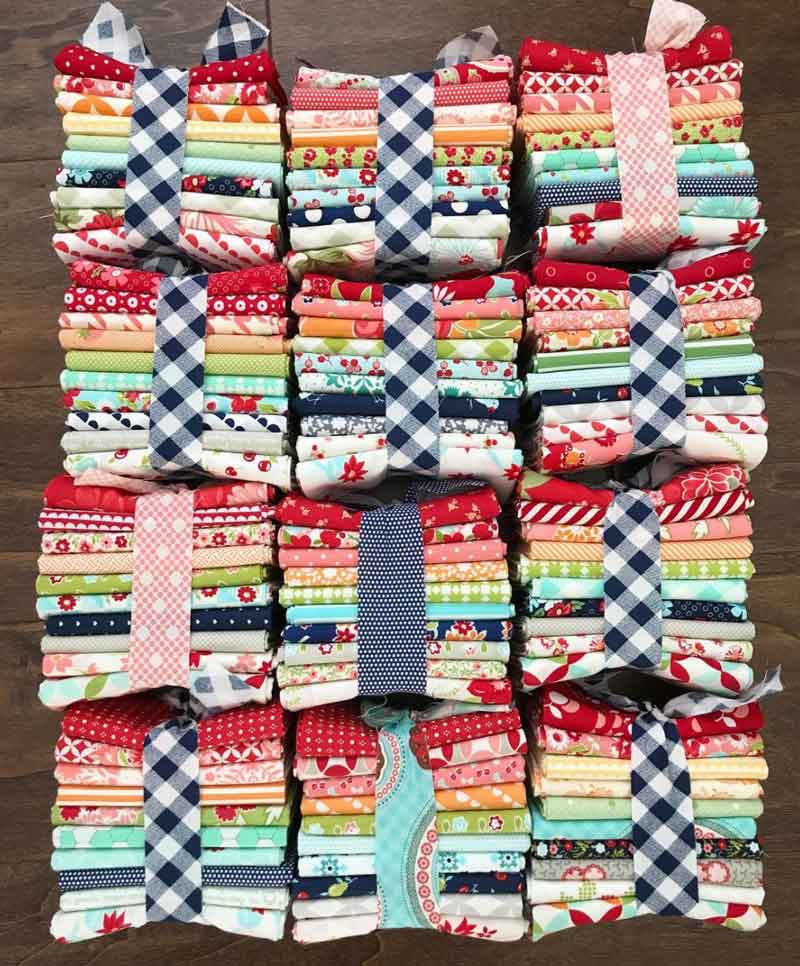
(Picture of Bonnie & Camille mini bundles swiped borrowed from Camille Roskelley's - Thimbleblossoms - Instagram.)
So what's the argument for pre-washing?
- Cotton fabric shrinks - between 3% and 5%. Flannel fabrics can shrink even more than that.
- Washing will remove excess dye from highly saturated colors - red, purple, dark blues and greens, etc..
- Fabrics are finished with sizing and other chemicals that can bother people who are sensitive to chemicals.
Fabric shrinks primarily in the width, and it can shrink as much as a couple of inches. Different types of fabric also shrink differently - "regular" quilting cotton, wovens - chambray, crossweaves and shot-cottons, linen and linen-blends, etc.
Many practitioners of needle-turn appliqué advocate pre-washing fabrics because it makes it easier to position and turn under. The "plumping" and tightening up of the fibers when they're washed also means it generally frays less - a plus on those inside points.
If the fabric is too soft after washing, it can be starched to your preferred crispness.
And really, the chemicals. From the dyes to the finishings - which often includes formaldehyde and insecticides - fabrics have a lot of added chemicals. If you're handling the fabric a lot - appliqué and hand-quilting? - this can be a problem.
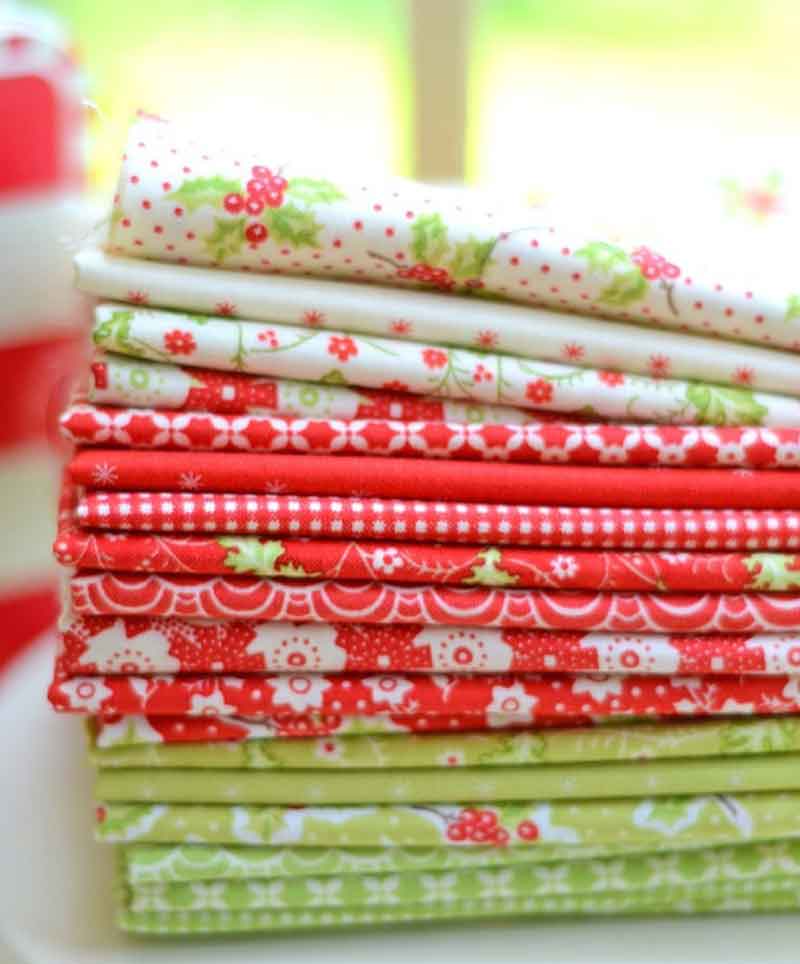
(Picture of Fig Tree's Christmas Figs swiped borrowed from Fig Tree & Co.'s Instagram.)
What about not pre-washing - using the fabric right off the bolt or out of the pre-cut?
- Most manufacturers of quilting cotton - and definitely Moda! - continually check fabric for color-fastness. While there will probably always be some excess dye in the fabric, steps are taken in the printing and dyeing process to ensure that dyes are completely set.
- Fabric is easier to cut and sew because of the crispness it has from the finishing process.
- The finished quilt will shrink when washed, giving it a soft, crinkly, quilty look.
- Even though quilting-quality cottons are color-fast, the color is a bit more vibrant before it's washed. This is definitely a consideration for something that will never be washed.
- If the fabrics are in a kit... unless I know that the pieces are generously cut and I can get more or make substitutions/additions, I probably wouldn't pre-wash because fabrics shrink. And washed pieces will now be "straight" according to the grain, but not necessarily square for cutting.
- Many quilters will also cite time as a reason - who doesn't want to cut into pretty new fabric as soon as we get it home?
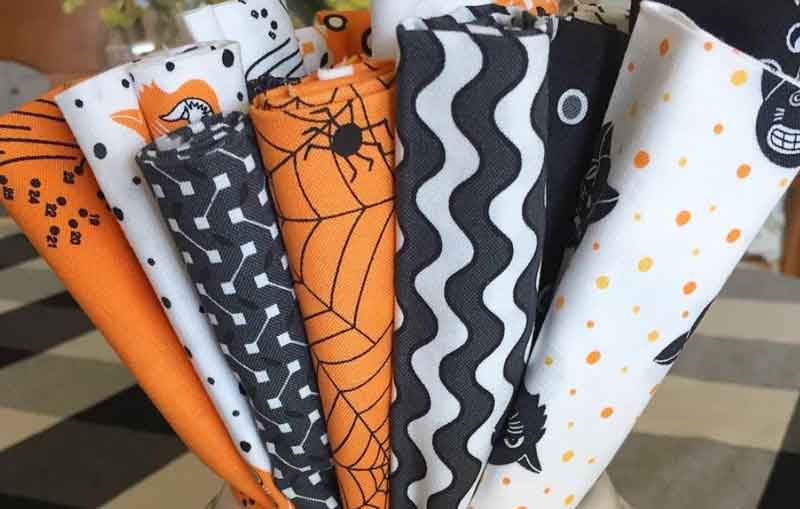
(Picture of Me & My Sister's Dot Dot Boo! swiped borrowed from Me & My Sister's Instagram.)
But what about washing the finished quilt - will pre-washing or not pre-washing make a difference?
Yes, there are absolutely factors to consider before starting a quilt about whether to pre-wash or not. If I was making a quilt using a batik or saturated solid - like red - with white, I would pre-wash those fabrics, especially if the quilt were made with yardage, fat quarters or fat eighths.
But what about using batik or highly-saturated color pre-cuts like Jelly Rolls or Charm Packs? There are two options - pre-washing the pre-cuts using a mesh laundry bag or washing the finished quilt carefully and consciously.
What does "washing the quilt consciously" mean?
- Wash the quilt in cold water with a soap that does not contain unnecessary additives - brighteners, softeners, etc. E.g., Orvus.
- Use "dye magnets" like Shout Color Catchers - a small sheet that is treated to attract excess dye in the washing water.
- If necessary, use professional dye-prevention products like Synthrapol and Retayne.
- Do not leave a wet or damp quilt sitting in the washing machine - remove it as soon as the wash-cycle is done. (True story - simply having a wet navy blue fabric resting on top of a wet white one can result in dye-transfer. Ask me how I know.)
Be wary of washing quilts in high-efficiency washers - they use less water in the wash-cycle, meaning that the concentration of excess dye in the water will be higher. This is one of those times where big, old-fashioned washers that can be filled with a lot of water are a benefit. This is also one of those times when hauling a stack of quilts down to a laundromat with really big commercial washers isn't a crazy idea.
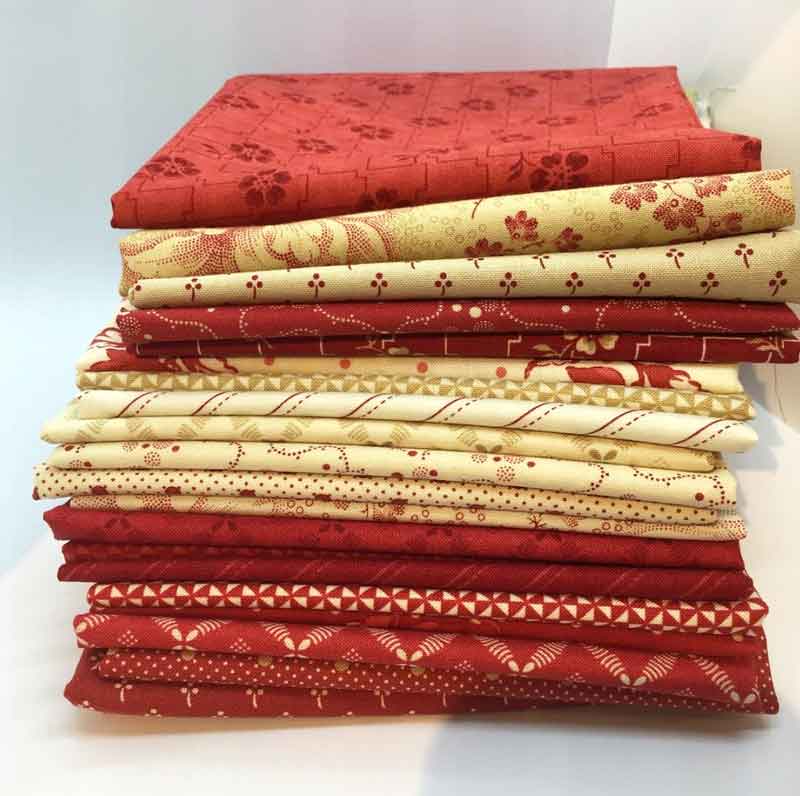
(Picture of Minick & Simpson's Farmhouse Reds swiped borrowed from Minick & Simpson's Instagram.)
Now... all that said, the one "type" of fabric that really does benefit from pre-washing is extra-wide backings. In fact, it's recommended.
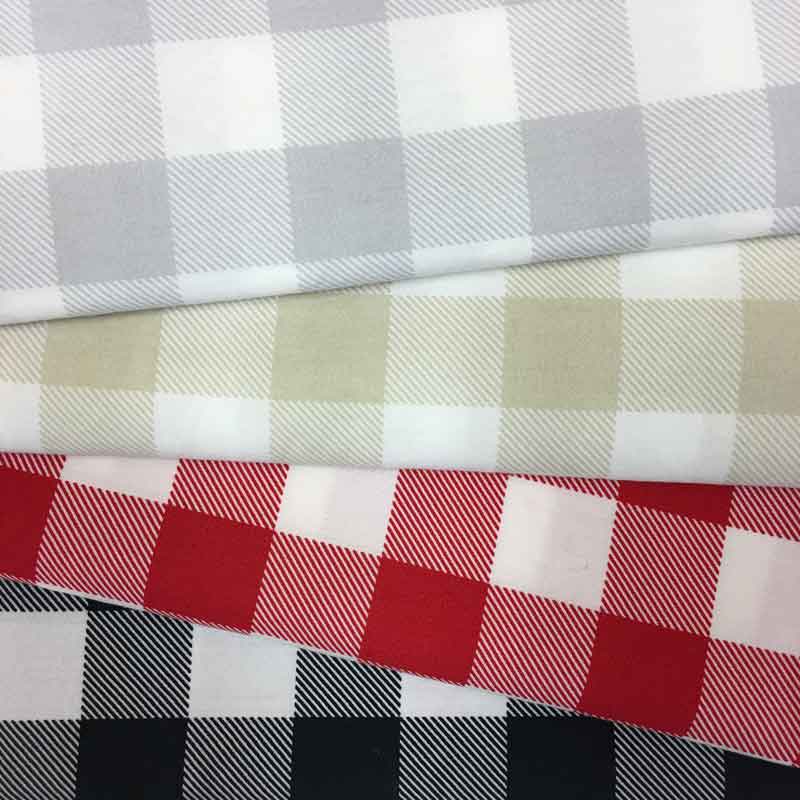
Moda's Buffalo Check Extra-Wide Backings.
The rolling process for extra-wide backings is such that it is easy for them to get pulled askew. Washing the extra-wide backing straightens that, making it easier for machine quilting, both on a long-arm machine and your home machine.
If you pre-wash the extra-wide backing but not the fabrics on the front of the quilt, will that make a difference? Ask a dozen quilters, get a dozen different answers... my own experience is that it hasn't made a difference. But others will disagree.
So take everything written here - and elsewhere - as adding to the collective knowledge base. There are so many factors that can be taken into consideration - if you wash all the fabrics, shouldn't you also pre-soak the cotton batting? Hard water vs. soft water? In 40-plus years of sewing and 30-plus years of making quilts, I won't pretend to know all the answers. Any of the answers!
Personal experience. Personal preference. What to wash and when can be reduced to the simple question of figuring out what works best for you - and knowing what you can live with.
If I were making a quilt with a lot of time-intensive hand-work, or one destined to become a family heirloom, I would take every precaution possible and probably pre-wash everything. Just to be on the safest side possible. But my quilts are used and washed - frequently. (Trust me, you don't want to know how my brother washes the quilts I've given him. And no, I don't mind because I love that he has multiple quilts on his bed.)
I also maintain that I've never made a quilt that Rosie couldn't sleep on.
Happy Friday!

Comments